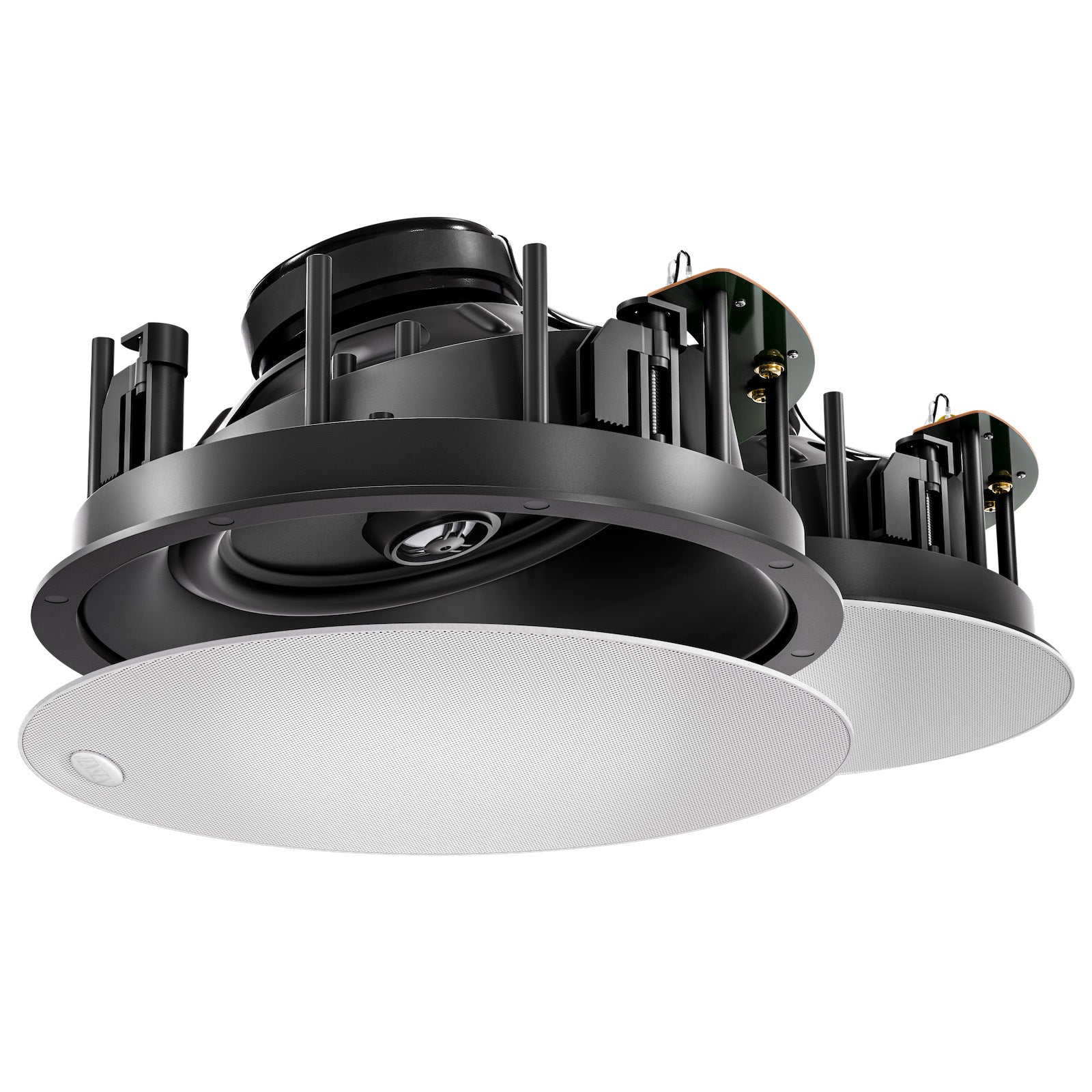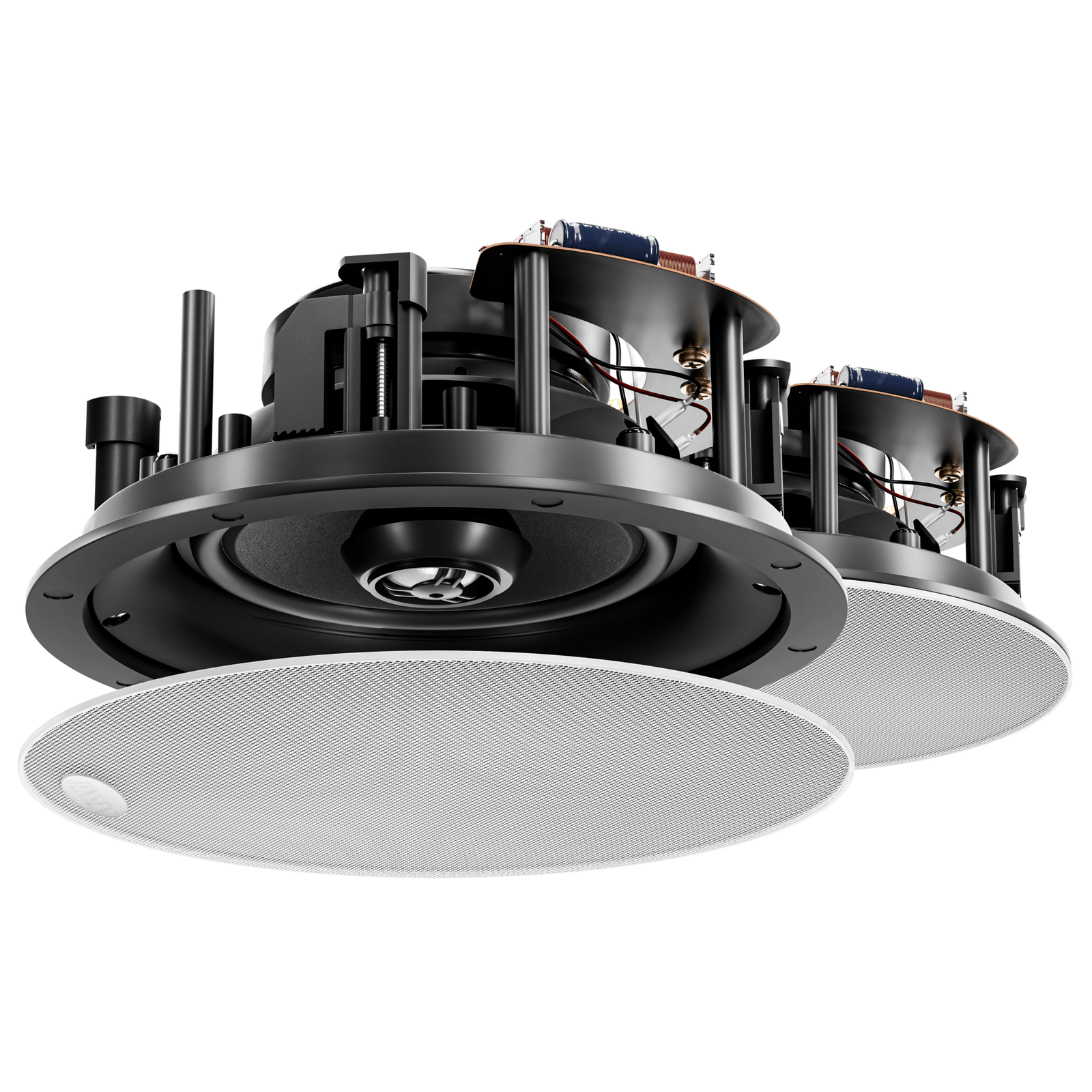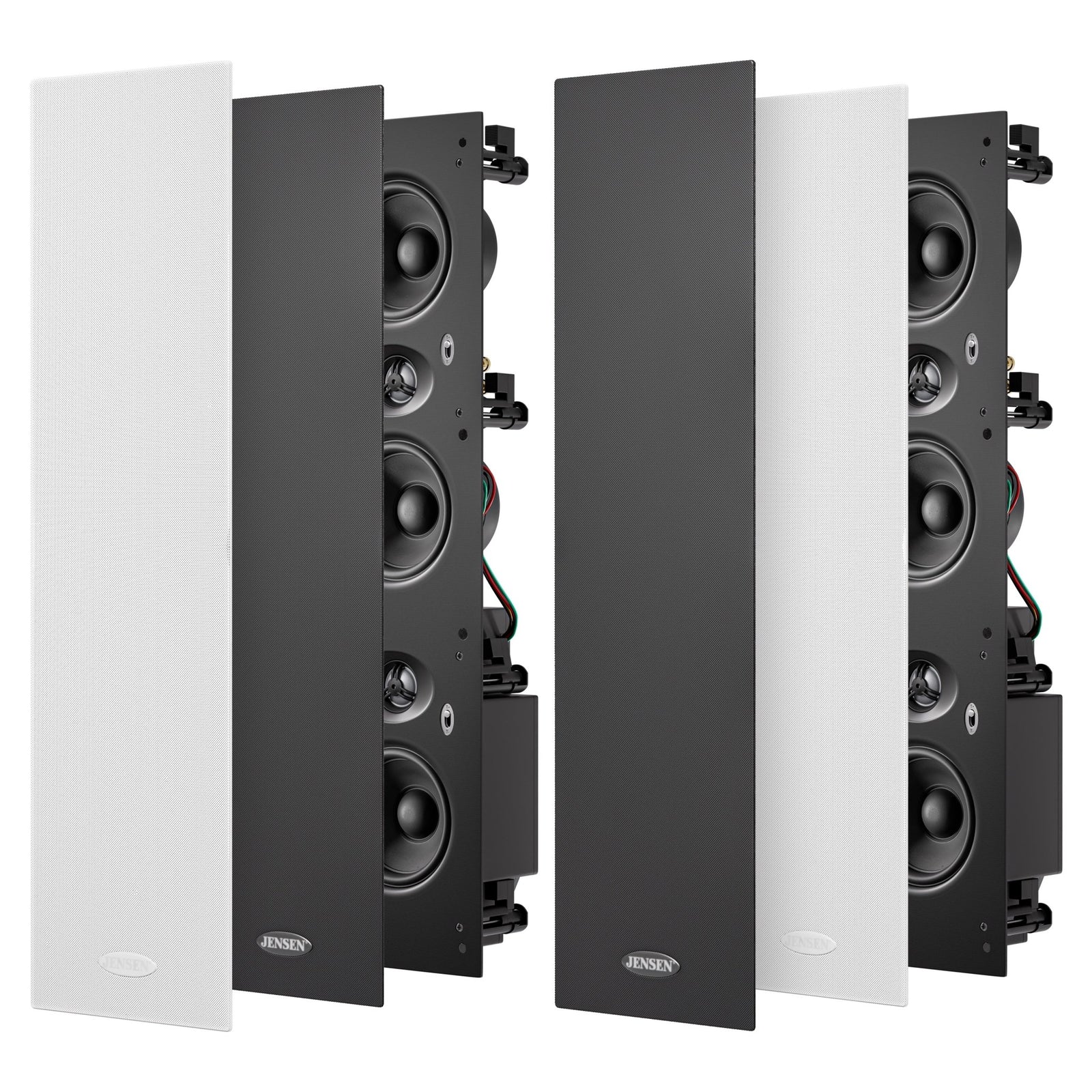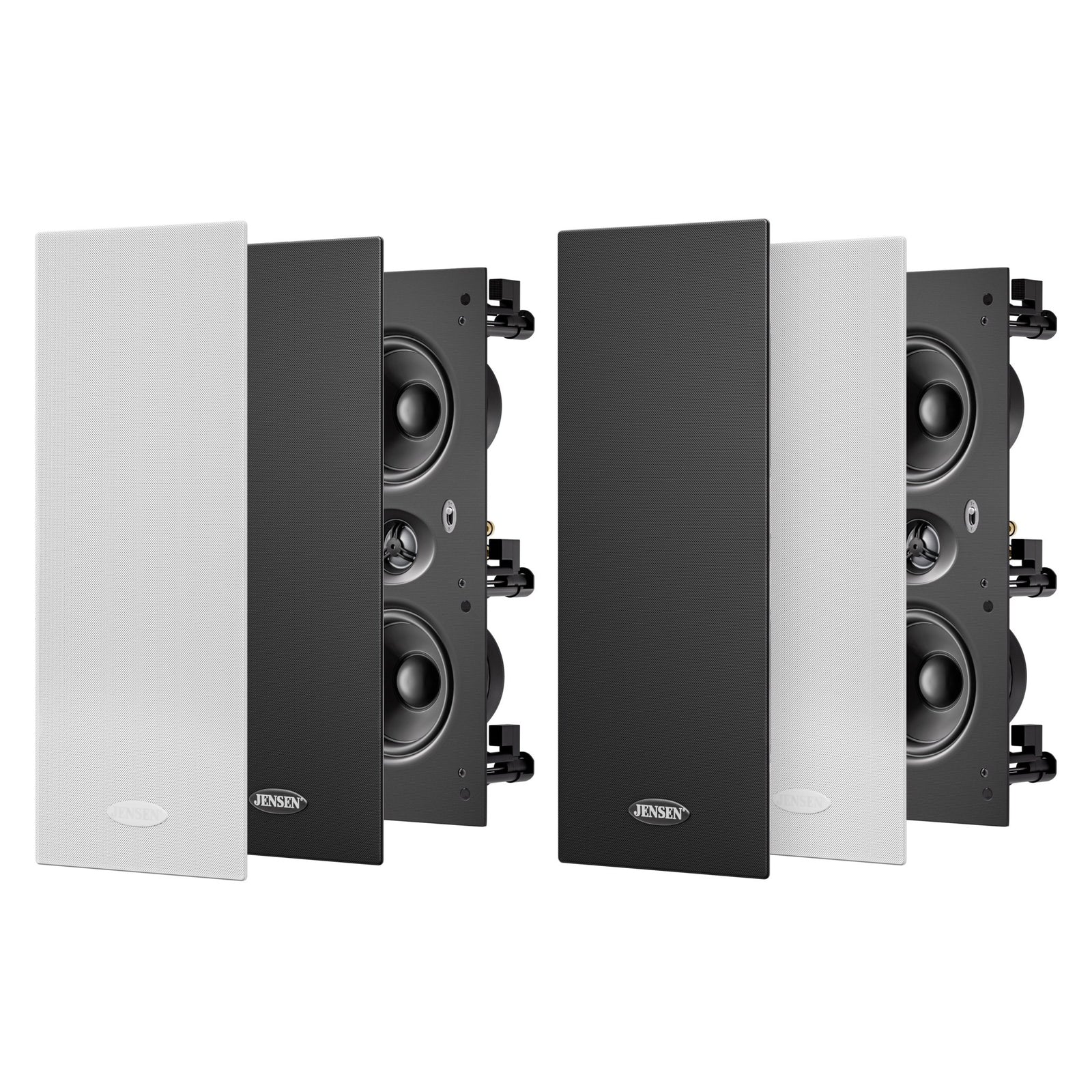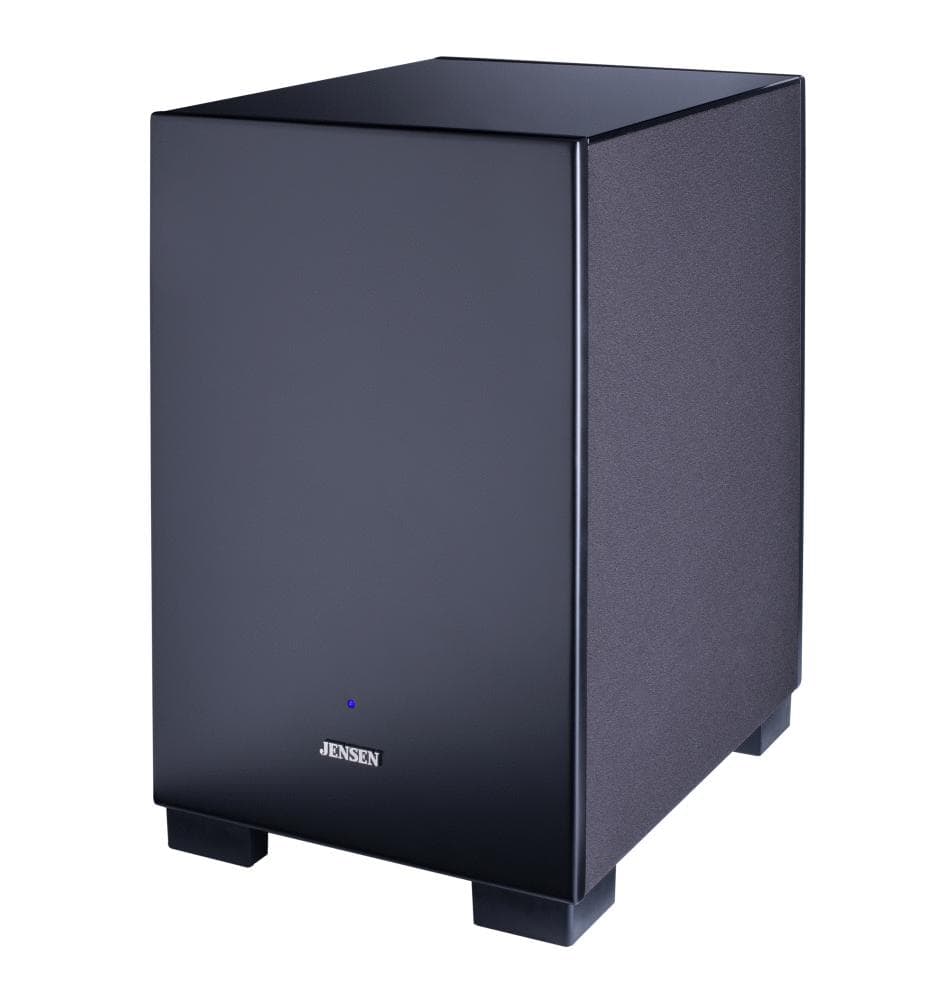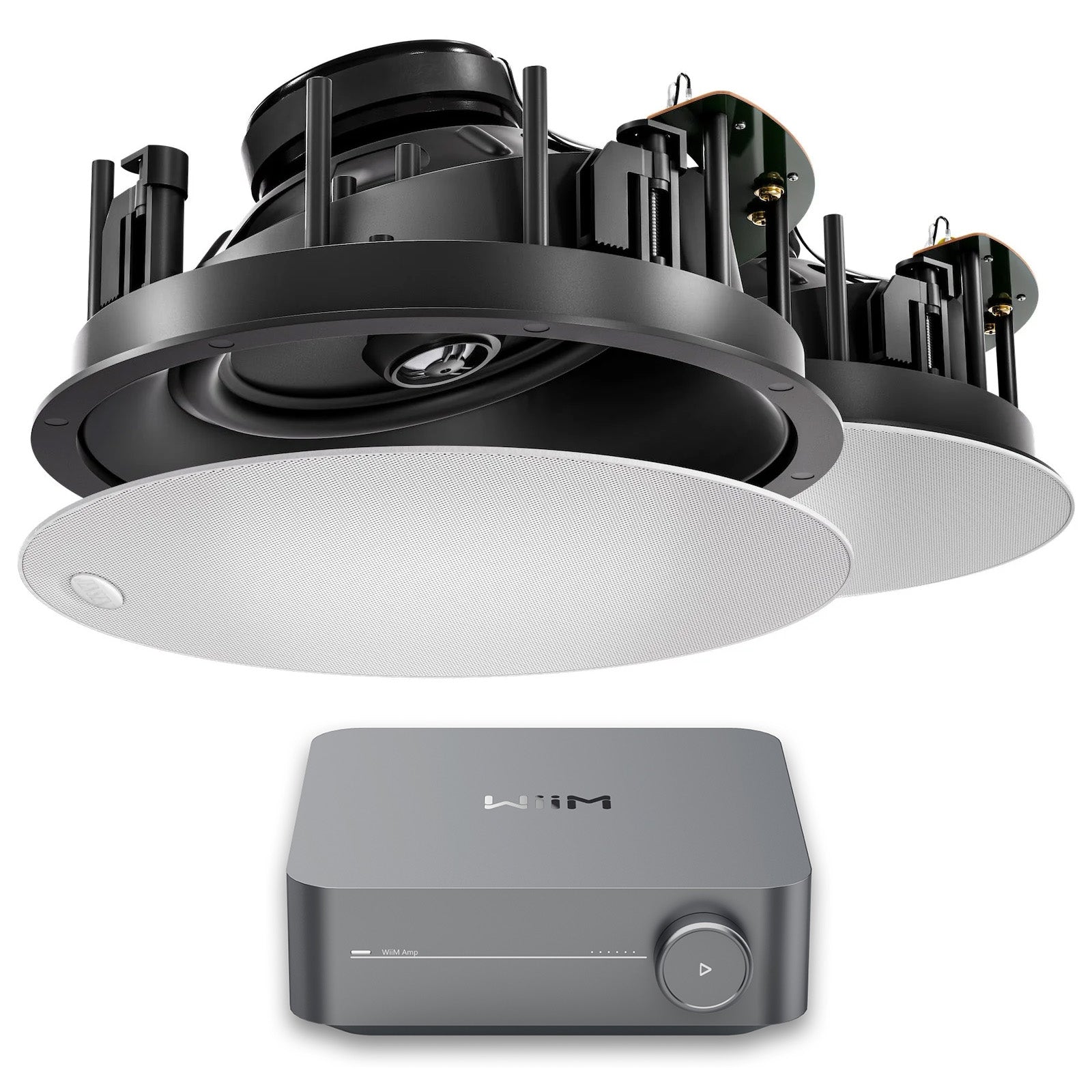THE SIMPLE GUIDE TO RUNNING CEILING SPEAKERS IN SERIES OR PARALLEL

If you want to run more than 2 ceiling speakers off of a “2-channel” amplifier / receiver...
You might be able to do it.
You just need to understand how to run your speakers in parallel and / or in series. This article will teach you what you need to know to do it, without blowing up your amplifier or killing your system’s audio quality.
Contents
- Series Or Parallel… Which One Is Right For YOUR Situation?
- The Important Basics Of Running Speakers In Series Or Parallel
- When & How To Run Speakers In Series
- When & How To Run Speakers In Parallel
Series Or Parallel… Which One Is Right For YOUR Situation?

If you’re reading this, you probably want to power extra speakers off of one amplifier.
(Or receiver… which is a unit that contains amplifiers.)
Maybe you want to put ceiling speakers in an extra zone and you don’t want to buy another amp. (If you have an AV receiver already, it might have extra zone amps inside you can use. Make sure you check with a pro before jumping to conclusions.)
Maybe you haven’t set your system up yet but you know you want to run 4 speakers off of one 2-channel amp.
Maybe you have 3 speakers somehow and only 2-channels…
In any case you need to figure which configuration is right for you and whether you can even use it.
The #1 best way to run in series or parallel
…is to not do it.
My recommendation is to run your systems as they were meant to be run. That's one speaker per channel.
Unless you’re running a professional audio system (called a 70 or 100 Volt Line system) that has a dozen speakers… your system wasn’t meant to be run in series or parallel.
The impedance and power output of the components are spec’d to play nice as they are.
If you have a special circumstance however, it can be done and it can work well.
So the next recommendation I’ll make for you is to run your in-ceiling speakers in SERIES, as long as you have a minimum of 100 W per channel and you’re only going for background music.
I do not recommend running in parallel ever. This is because running in series is always safe. Running in parallel can cause your amplifier to overheat, and cause your speakers to clip and distort.
Regardless, I’m going to teach you both in this post. You can use parallel if it suits your needs, just heed the following advice and be careful.
The Important Basics Of Running Speakers In Series Or Parallel

To make it crystal clear what you are doing in this situation, you must know the basics of what you are doing.
If you have a stereo amplifier, stereo integrated amplifier, 2-channel amplifier — or any variation of those — they are all different names for the same type of unit.
These 2-channel amplifiers are actually units with two separate amplifiers inside. One amplifier receives the LEFT signal and boosts it. The other amplifier receives the RIGHT signal and boosts it.
When you run in series or parallel you are powering more than one speaker with only one amplifier (also known as channel).
The same applies for an AV receiver (also called a surround sound amplifier). You have 5, 7, 9 or more channels inside. Each channel is a separate amplifier. So when you run in series or parallel, you are adding a speaker to any one of those amplifiers.
For this reason you must be mindful of…
Balance issues (left and right) that can happen
You will soon learn how series and parallel can cause changes in speaker performance. So when you run an extra speaker off of one channel, you risk creating an imbalance with the other channel — IF you don’t do the same on both sides.
The simple example is running 3 speakers off of one stereo amp.
You run LEFT as normal. One speaker connected to the LEFT amplifier terminals. Then you run RIGHT in either series or parallel, with 2 speakers off of that pair of terminals.
Those RIGHT 2 speakers won’t play at the same volume as the 1 LEFT speaker.
Be mindful of this as you set everything up. If you run both sides in the same configuration it won’t be a problem. Otherwise you can use “balance” knobs and manual EQ functions to even things out (if they’re available).
When & How To Run Speakers In Series

If you’re designing an audio system in a big room and you only want music, this method may be for you.
Running two speakers off of one amplifier in series means you’re “daisy chaining” them, one after the other.
When you run in series, you INCREASE the total impedance that the amplifier channel is powering — so you get less volume and dynamics for a given volume level.
That means you run the risk of never having the loudness you want. You also might “dull” the sound of your speakers. For that reason, running in series works out better if you use an amplifier with high power. But you also need to consider the impedance spec of your speakers…
If your speakers are 8 ohms or higher, you will need a high powered amp to prevent low volume issues. (Even then you may feel the output is too low.)
If your speakers are less than 8 ohms — 4 to 6 ohms — then they will do much better in series. Our performance in-ceiling speakers are an efficient 6 ohms and can work well in series if needed.
Also note that LONG runs of speaker cable increase resistance which can make it harder for series speakers to perform.
How to run speakers in series
Remember: You’re daisy chaining the speakers. So you will need three lengths of speaker cable.
Run one cable from the positive (+) terminal of the amp channel to the (+) of one speaker. Run the next cable from the negative (-) terminal of THAT speaker to the (+) of the NEXT speaker. Finish off by running the last cable from the (-) of speaker two back to the (-) terminal of the amp channel.

Note that this explanation is for one channel. So if it’s the RIGHT channel, you’re going right (+) to speaker one (+)... and right (-) to speaker two (-).
Voila! Two speakers powered off of one channel.
What if my in-ceiling speakers are already run? (Series)
If your home already has in-ceiling speakers installed and the cables are run in the walls, you can still do this. You just need the cables to be sticking out of the same area.
You can take the (+) end of one speaker and the (-) end of another speaker, twist them together, and use electrical tape to cover the twist. Then connect the remaining ends like normal to one amp channel.
Can I run more than 2 speakers in series?
Remember: Series is always safe, as long as you follow these directions and do it properly. But it reduces speaker performance.
So the answer here is YES but don’t expect it to perform well. If your speakers add up to a low-enough impedance, you have a high powered amplifier, and you only want background listening… it could be OK. But not recommended.
When & How To Run Speakers In Parallel

Running in parallel means you are “piling” speaker cables into the same terminals on the amplifier. You run each speaker as if the other speaker isn’t there.
When you run in parallel, you DECREASE the total impedance that the amplifier channel is powering — so you pull more current from the amplifier at a given volume level.
Critical!
Unlike with running in series, this does NOT mean you get “better” performance out of your speakers!
It’s important to think about this as if you are pulling more current from your amp… NOT “getting extra” out of it. By running in parallel, you are giving the electrical current two paths to take which makes it easier for the current to flow.
This means your amplifier runs harder at a lower volume knob setting.
You run the risk of heating the amplifier up and overdriving your speakers when you run them this way. Often times it seems like you’re getting extra volume because they’ll play louder at a low volume (great!). But you’re also getting a distorted sound… so that loud volume is actually hurting your audio performance.
To put it simply… run in parallel at your own discretion! If you have higher impedance speakers and a higher powered amplifier, you can do this and get awesome efficiency.
I won’t recommend numbers for those things though, because I don’t want to encourage this. You can do more research to confirm your specs are good for it.
How to run speakers in parallel
Now that I’ve made it sound like running in parallel will make your amp grow legs and dive out of your lounge room window… I’m going to show you how it’s done!
You will need four lengths of speaker cable to do this.
Simple put… you connect (+) to (+) and (-) to (-) as if you were running one speaker from that channel. But you do it for two speakers by twisting together the ends of two cables and connecting them to a terminal as one.

What if my in-ceiling speakers are already run? (Parallel)
It’s easy to connect pre-run in-ceiling speakers in parallel. Find the spot where the cables are coming out of the wall.
Get the (+) ends of two of the speakers and connect them to the (+) terminal of one amp channel. Then take the two (-) ends of those same speakers and connect them to the (-) amp channel. Repeat for the other two speakers on the other channel.
Can I run more than 2 speakers in parallel?
If you’ve read the rest of this section about going parallel, you already know this is a bad idea. It’s not impossible but you will need to get a pencil and calculate the effective impedance of each circuit.
If you don’t have experience doing that… don’t run more than 2 speakers in parallel.
Thanks for reading! If you have any other questions, contact us here.
To learn more, check out these related articles…
What AV receiver should I buy for home theatre?
How to play music through in-ceiling speakers
/blogs/news/5-reasons-to-go-in-wall-or-in-ceiling5 reasons to go in-wall or in-ceiling for your next home theatre
